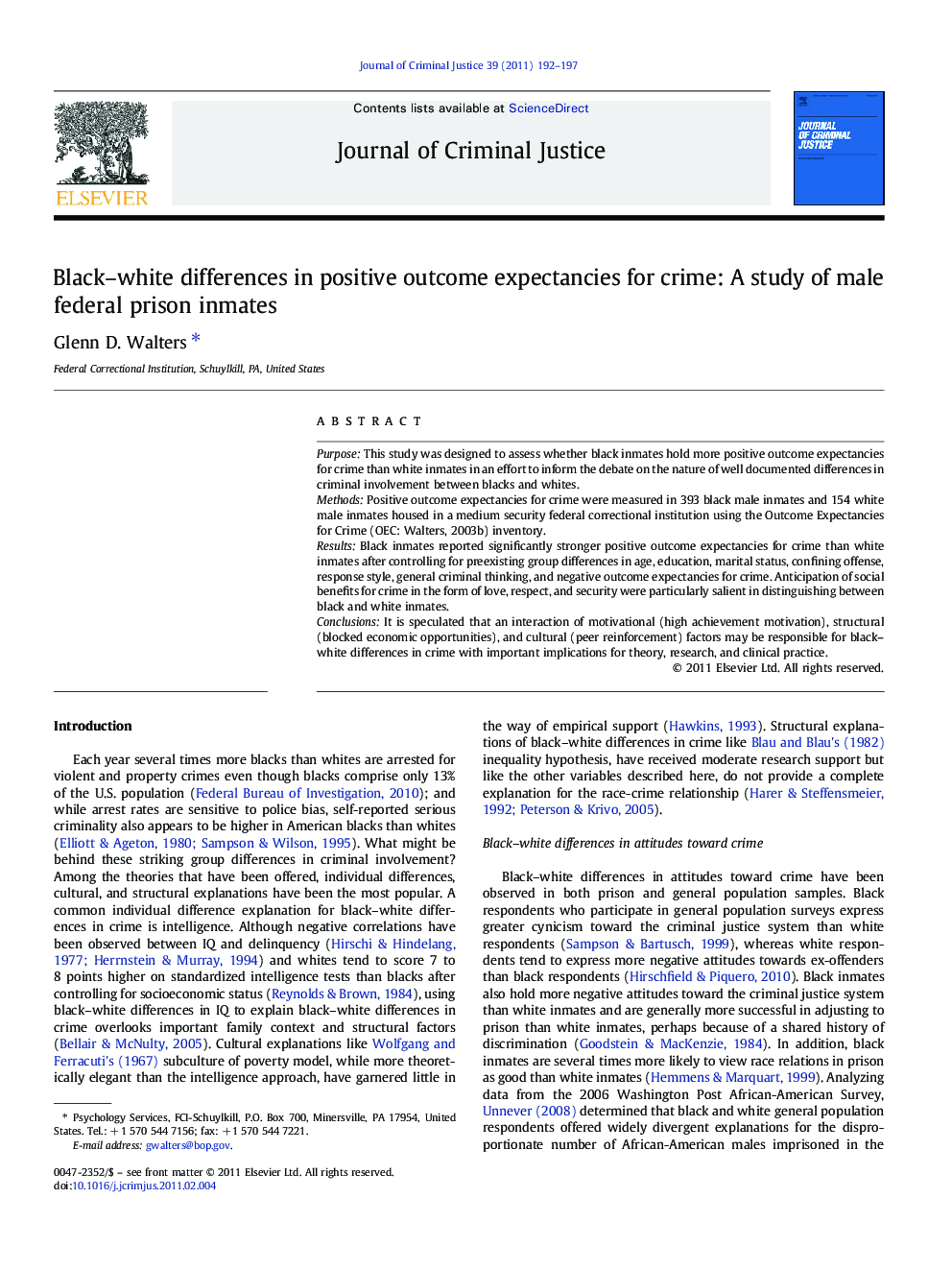| کد مقاله | کد نشریه | سال انتشار | مقاله انگلیسی | نسخه تمام متن |
|---|---|---|---|---|
| 883030 | 912040 | 2011 | 6 صفحه PDF | دانلود رایگان |

PurposeThis study was designed to assess whether black inmates hold more positive outcome expectancies for crime than white inmates in an effort to inform the debate on the nature of well documented differences in criminal involvement between blacks and whites.MethodsPositive outcome expectancies for crime were measured in 393 black male inmates and 154 white male inmates housed in a medium security federal correctional institution using the Outcome Expectancies for Crime (OEC: Walters, 2003b) inventory.ResultsBlack inmates reported significantly stronger positive outcome expectancies for crime than white inmates after controlling for preexisting group differences in age, education, marital status, confining offense, response style, general criminal thinking, and negative outcome expectancies for crime. Anticipation of social benefits for crime in the form of love, respect, and security were particularly salient in distinguishing between black and white inmates.ConclusionsIt is speculated that an interaction of motivational (high achievement motivation), structural (blocked economic opportunities), and cultural (peer reinforcement) factors may be responsible for black–white differences in crime with important implications for theory, research, and clinical practice.
Research highlights
► Positive outcome expectancies for crime were compared for black and white inmates.
► Black inmates had higher positive outcome expectancies for crime than white inmates.
► Outcome expectancy differences not the result of demographics or criminal thinking.
► Anticipation of social benefits of crime particularly salient for black inmates.
► Achievement motivation important in explaining black–white differences in crime.
Journal: Journal of Criminal Justice - Volume 39, Issue 2, March–April 2011, Pages 192–197